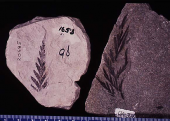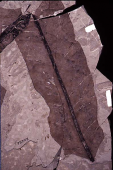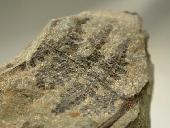|
 See More Images See More Images

Asplenium
© 1998 UCMP

Acrostichum hesperium
© 1998 UCMP

Pecopteris oregonensis
© 2006 The Virtual Fossil Museum
|
What are Ferns and Relatives? Ferns are land plants anchored to the ground by thin “roots” called rhizomes, and most have frond-like leaves and reproduce by means of spores. Modern ferns carry their sporangia (spore-bearing bodies) on the underside of the fronds. There are about 10,000 living species of ferns. The fossil record of ferns and their relatives extends back to the Early Devonian. Although some fern relatives (Cladoxylopsida) went extinct, other relatives, like the whisk ferns (Psilotales), can still be found today. First known fossil occurrence: Devonian. Last known fossil occurrence: Quaternary. This group has living relatives. |
Fossils through time:
Choose a time period to see what life was like:
|
|